Figures & data
Table 1. Chemical composition (in mass%) of test specimens used in this work (from material certificate).
Figure 1. Traction machine for measuring strain-stress curves under hydrogen gas pressure to 200 MPa. Not shown are the gas compressor, the hydraulic syringe pump and the data collection unit. (1) 10 kN hydraulic ram (ENERPAC), (2) 300 MPa stainless steel vessel with CuBe liner, (3) test specimen, (4) load frame, (5) pull rod, (6) pull adaptor (7) pull shaft, (8) electronic linear gauge (1 μm resolution), (9) O-ring seals, (10) wiper seal, (11) gas inlet, (12) spacer.
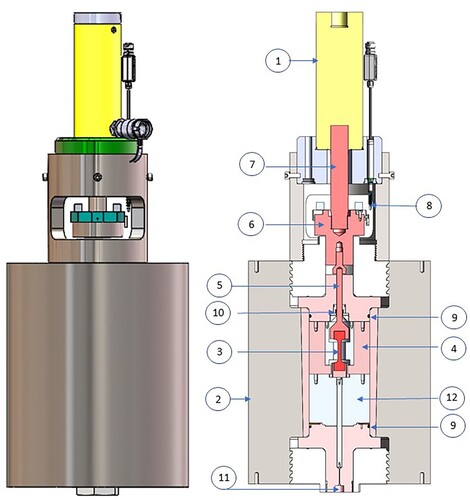
Figure 2. Picture of a test specimen (a) and example of a stress–strain curve (b) for a typical high-tensile steel (ISO 34NiCrMo16, Wst. no. 1.6773), with circles and dots/stars for measurements in air and ∼ 200 MPa H2 gas, respectively. Vertical errors indicate fracture. 0.2YST is the 0.2% yield strength, UTS the ultimate tensile strength and E the elongation. We used cylindrical specimens of 6.25 mm diameter according to ASTM standard A370-08a, length of reduced section 32, 72 mm total length, with an M20 thread at the ends. The central 32 mm were polished to have a surface roughness of less than 10 μm and cleaned with alcohol before each measurement.
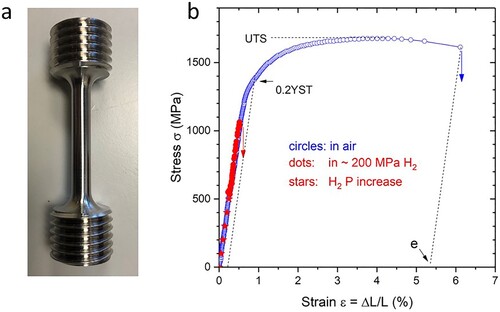
Figure 3. Stress–strain curves for MP35N, pristine (i.e. non-aged) and aged specimens. Circles and squares correspond to data obtained in air and high H2-gas pressure. The inset shows an enlarged view of the low-ϵ data. For the runs with H2, no data are recorded below 550 MPa which corresponds to the pressure increase in the vessel.
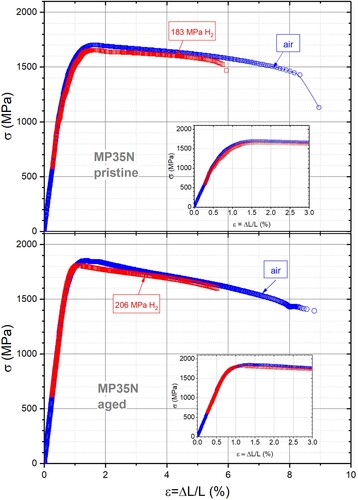
Figure 4. Scanning electron microscopy images of the fracture surface of MP35N samples tested in air (left) and in 183 MPa H2 gas (right). The insets give a global view across the specimen of 6.25 mm diameter, labels ‘a’ and ‘b’ correspond to enlarged views of spots marked in the insets. Measurements were carried out with a Zeiss ULTRA55 instrument with with a FEG-Schottky electronic source and equipped with the Gemini® ultra-high resolution electron column.
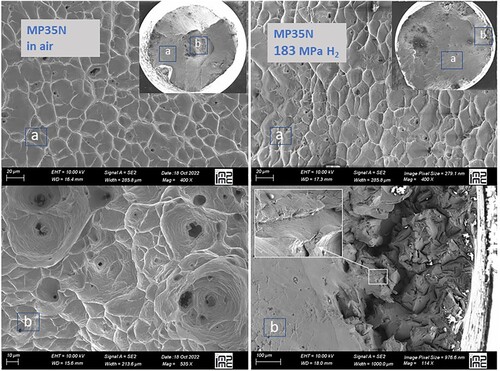
Figure 5. X-ray diffraction patters of MP35N. Main figure: pristine (lower pattern, blue) and aged (upper pattern, red) material which was never in contact with H2. Inset: patterns from the aged specimen tested under 206 MPa H2 pressure. Numbers are Miller-indices of reflections. The differences in peak intensities are due to texture (preferred orientation of grains). Patterns in the main figure were displaced vertically to avoid overlap. λ = 1.79 Å. Data were collected with a counting time of 300 ms per step using an X’Pert Pro instrument from PANalytical equipped with a parallel beam X-ray mirror for Co radiation.
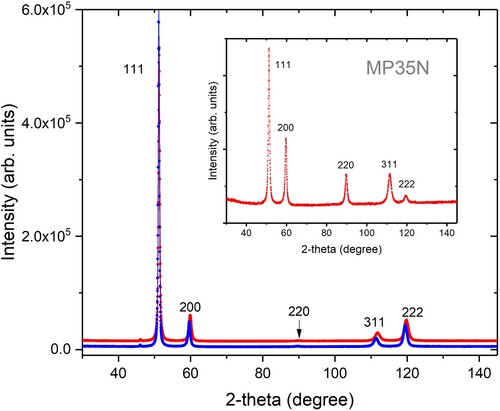
Table 2. Mechanical characteristics of MP35N compared to other high-tensile steels and alloys of comparable strength, tested in this work or from the literature [Citation7]. The hydrogen environment embrittlement (HEE) index [Citation7] is defined in the main text, typical errors of this quantity are +/−0.03. All material of our work was in form of wrought bars. Alloy designations correspond to their commercial names. 819B: 35NiCrMo16, 819AW: 35NiCrMo16 remelted by consumable electrodes. MARVALX12: X1CrNiMoAITi12-9. MLX17: X1CrNiMoAlTi12-11-2. Data for A-286 correspond to wrought material without aging.
Data availability statement
The data that support the findings of this study are available from the corresponding author upon reasonable request.
